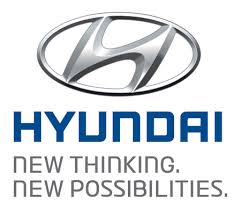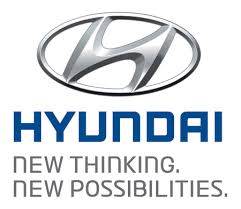
The fortress mentality at Hyundai Motor Co it being tried to be wrecked by Hwang Seung Ho.
At the Hyundai Motor Group, a sprawling conglomerate with companies spanning industries as diverse as steel, construction and financial services, the Korean automaker is the crown jewel. Hyundai’s vast internal network of parts makers can produce all of the front-ends, seats, lamps, axles, engines and transmissions that are needed for its Hyundai and Kia models and it can choose from three steel-making affiliates when the company needs metal for its Hyundai models.
However according to Hwang, Hyundai Motor’s executive vice president of information technology development, these days the auto world is being transformed at a blistering pace due to fast-moving technologies. He thinks that to remain competitive in the race to dominate the coming era of connected cars and autonomous driving, the world’s fifth-biggest carmaker needs to be far more open to tie-ups with tech upstarts and Silicon Valley giants.
“As the systems get more and more complex, we cannot deal with everything,” Hwang said in an interview. “For some areas that we need to fill the gap, we need collaborations of our partners,” he says.
The top brass at the Korean company is dominated by lifers and Hwang, 60, is a rare bird at the company. Leading the work of semiconductor development, he joined Hyundai two years ago from Samsung Electronics Co. he also helped develop high-definition multimedia interface (HDMI), a technology that improved the audio and video quality of computer monitors and TVs for a decade at Silicon Valley startup Silicon Image before joining Samsung.
There are several privileges that membership in the Hyundai empire has. According to Ed Kim, a vice president at researcher AutoPacific Inc, cost savings have been possible for Hyundai Motor and Kia Motors Corp. due to the vast resources at the conglomerate. Joint ventures or alliances to make high-cost, low-volume sports cars and electric vehicles have been snubbed by Hyundai and Kia unlike rival automakers. However in the realm of advanced driver-assist systems and autonomous technologies, the companies lack expertise, Kim says.
“This space is only going to get more competitive. There will have to be some shift in the mindset of Hyundai to make sure they are working very openly with startups, just because it hasn’t typically been Hyundai’s practice to be very open with outside companies,” said Kim, who spent three years working for Hyundai’s U.S. product development group on models including the Veloster sports car.
Apple Inc.’s CarPlay and Alphabet Inc.’s Android Auto, which integrate iPhone and Android handsets with car dashboards, have been aggressively adopted by Hyundai. A similar system from search-engine giant Baidu Inc. called CarLife, has been embraced in China by the company.
Hyundai’s building on strength by opening up to these tech giants.
“There’s this wide disparity now between the Korean brands that are performing very well in this category versus the other manufacturers, particularly the Japanese brands, which are not performing as well. They really work to simplify the interfaces, the menus, and to really work out a lot of those concerns consumers had with their technology,” Renee Stephens, vice president of U.S. automotive quality at J.D. Power, said.
The experience that the customers value with their smartphones can be provided by Hwang’s vision to make connected cars. Hwang also plans to eliminate flaws that are intolerable when trying to drive safely and without distraction by eliminating the bugs or need to press a reset button.
(Source:www.bloomberg.com)
At the Hyundai Motor Group, a sprawling conglomerate with companies spanning industries as diverse as steel, construction and financial services, the Korean automaker is the crown jewel. Hyundai’s vast internal network of parts makers can produce all of the front-ends, seats, lamps, axles, engines and transmissions that are needed for its Hyundai and Kia models and it can choose from three steel-making affiliates when the company needs metal for its Hyundai models.
However according to Hwang, Hyundai Motor’s executive vice president of information technology development, these days the auto world is being transformed at a blistering pace due to fast-moving technologies. He thinks that to remain competitive in the race to dominate the coming era of connected cars and autonomous driving, the world’s fifth-biggest carmaker needs to be far more open to tie-ups with tech upstarts and Silicon Valley giants.
“As the systems get more and more complex, we cannot deal with everything,” Hwang said in an interview. “For some areas that we need to fill the gap, we need collaborations of our partners,” he says.
The top brass at the Korean company is dominated by lifers and Hwang, 60, is a rare bird at the company. Leading the work of semiconductor development, he joined Hyundai two years ago from Samsung Electronics Co. he also helped develop high-definition multimedia interface (HDMI), a technology that improved the audio and video quality of computer monitors and TVs for a decade at Silicon Valley startup Silicon Image before joining Samsung.
There are several privileges that membership in the Hyundai empire has. According to Ed Kim, a vice president at researcher AutoPacific Inc, cost savings have been possible for Hyundai Motor and Kia Motors Corp. due to the vast resources at the conglomerate. Joint ventures or alliances to make high-cost, low-volume sports cars and electric vehicles have been snubbed by Hyundai and Kia unlike rival automakers. However in the realm of advanced driver-assist systems and autonomous technologies, the companies lack expertise, Kim says.
“This space is only going to get more competitive. There will have to be some shift in the mindset of Hyundai to make sure they are working very openly with startups, just because it hasn’t typically been Hyundai’s practice to be very open with outside companies,” said Kim, who spent three years working for Hyundai’s U.S. product development group on models including the Veloster sports car.
Apple Inc.’s CarPlay and Alphabet Inc.’s Android Auto, which integrate iPhone and Android handsets with car dashboards, have been aggressively adopted by Hyundai. A similar system from search-engine giant Baidu Inc. called CarLife, has been embraced in China by the company.
Hyundai’s building on strength by opening up to these tech giants.
“There’s this wide disparity now between the Korean brands that are performing very well in this category versus the other manufacturers, particularly the Japanese brands, which are not performing as well. They really work to simplify the interfaces, the menus, and to really work out a lot of those concerns consumers had with their technology,” Renee Stephens, vice president of U.S. automotive quality at J.D. Power, said.
The experience that the customers value with their smartphones can be provided by Hwang’s vision to make connected cars. Hwang also plans to eliminate flaws that are intolerable when trying to drive safely and without distraction by eliminating the bugs or need to press a reset button.
(Source:www.bloomberg.com)














